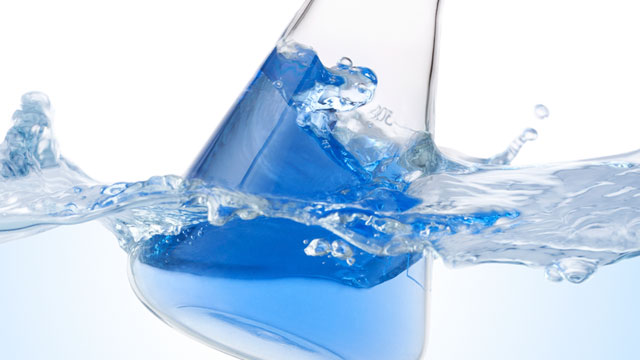
“Cleaner than clean” sounds like a slogan for laundry detergent, but analytical chemists know that even the slightest contaminant can ruin an inorganic analysis. Similarly, biochemists understand how trace metals can knock out enzymes and oils can swamp liquid chromatography signals.
Numerous websites offer tips on hand-cleaning glassware as a stand-alone operation followed by autoclaving, or as a prelude to automated washing and drying. Sigma Aldrich (St. Louis, MO), for example, provides Bulletin AL-228, Suggestions for Cleaning Glassware1, which covers all the organic or inorganic residues one is likely to encounter.
Ace Glass (Vineland, NJ) provides advice on conditioning glassware before use with a mild hydrochloric or nitric acid wash, followed by a deionized water rinse. Ace suggests avoiding long soaks in a strong alkaline solution because a strong base eventually etches glass. Greasy organic residues are removed either with solvent or, as Ace recommends, with a chromic acid bath. Users should follow up with a standard automated washing cycle with a suitable detergent to remove trace residues and ensure complete drying.2
Meanwhile, Alconox (White Plains, NY) provides invaluable tech and application notes3 for best-practice laboratory washing, plus a PDF document on detergent selection.4
Oily residues
“Procedures for removing oil vary, depending on the nature of the oil,” says Lisa Choplo, applications specialist at Miele (Princeton, NJ). Where petroleum products may be aggressive to lab washer components, the rule of thumb is to clean the glassware as well as possible before placing it into the washer.
“It’s best to remove stuck-on material using a towel or wipe before washing,” Choplo continues. “Consider using a wash program with multiple prewashes and an emulsifier to get as much oil off the glassware and down the drain as rapidly as possible.”
Related Article: Know Your Options for Cleaning Labware
For residue-free cleaning once the glassware is in the machine, Choplo suggests a wash program consisting of prewashes and multiple rinses of deionized water, including a heated final rinse and high wash temperatures of 80°C to 85°C for both the wash and final rinse temperature. Once glassware is removed, store it in a dust-free, dry environment protected from the outside air. Flask and beaker openings may be covered or capped for protection from dust and laboratory fumes.
Once labware is ready for the washer, residual oils are eliminated through judicious selection of detergent and predefined cleaning protocols, which differ according to how the glassware had been previously used and its future intended use.
Purchase tips
Jenny Sprung, senior application specialist at Labconco (Kansas City, MO), observes that labs design their own approaches to “cleaner than clean.” “Companies have SOPs for their specific cleaning needs, for example a wash cycle at 199 degrees Fahrenheit for 30 minutes, and three pure water rinses. These protocols are stored within the machine.”
Sprung offers the following considerations for selecting a labware washer:
- Energy Consumption: Lab washers can be energy hogs. Consider running the cycle overnight when electricity rates are lower. To conserve water and electricity, make sure the washer is full before turning it on.
- Low-Residue Performance: If the cleanest possible labware is your goal, look into EPA Methods 200.7, 524.2, 525.1 and 8270, which are used to test for the most common postwashing residues. Then ask the washer manufacturer for its unit’s standardized residue data.
- Flexibility and Durability: Lab washers should accommodate all your most-used labware, resist possible contaminants, and last for years.
- Validatability: Laboratories may need to validate their washer’s performance with respect to cycle duration, wash temperature, and drying. “The easiest way to achieve this is through a direct RS232 port that connects the washer to a computer logging system,” Sprung says.
References
- Sigma Aldrich, Suggestions for Cleaning Glassware https://www.sigmaaldrich.com/content/dam/sigmaaldrich/docs/Aldrich/Bulletin/al_techbull_al228.pdf
- Ace Glass, What Are Good Techniques for Cleaning Laboratory Glassware? http://www.aceglass.com/dpro/kb_article.php?ref=8386-IPSF-3037
- Alconox, Tech Notes, http://technotes.alconox.com/category/detergents/
- Alconox, Alconox Guide for Labware Washing Equipment, http://www.alconox.com/resources/labwasherguide.aspx
For additional resources on lab washers, including useful articles and a list of manufacturers, visit www.labmanager.com/lab-washers










